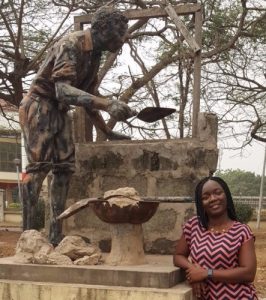Felicity Tackey-Otoo presented her research at the latest SASA meeting on Wednesday October 18. Her lecture was titled, “The Viability of Low Cost Housing in Ghana: The Redevelopment of Tema.” Her presentation began with the idea that shelter is a necessity of life, and according to the Maslow’s Hierarchy of Needs, biological or physiological needs such as food, clothing, and housing are the most important needs of every creation. This means that access to good housing is a very essential part of every human being. A United Nations Report showed that Africa is the least urbanized, yet the most rapidly urbanizing region of the world. The UN-Habitat also asserts that, 30% of the world’s urban population lives in slums and in deplorable conditions. The UN-HABITAT also projects that by 2030, Africa will no longer be a rural continent, as more than 50% of its population will be in cities. This provides a challenge of developing strategies that would meet the high demand for housing. Ghana currently has 5.4 million slum dwellers and it’s expected to reach 7.1 million by the year 2020.

Felicity’s research was conducted in Tema, a city located 18 miles east of Accra, the capital city of Ghana. This strategic location was chosen to host the main harbor, the industries and also need for the Volta River Project (Akosombo Hydroelectric Dam). The Tema Development Corporation (now the TDC Company Limited) was set up on 1952 to plan and develop the 63 square miles land on a 125-year lease term. The proposed planned population was 250,000 and the designer and developers were given to Doxiadis Associate from Greece. Of the 13,50 housing units proposed by the TDC, 10,060 units would be allocated for low cost housing, representing 74%.
Based on field work Felicity conducted in Ghana in December 2016 and May 2017, a proposed 3 story, 2 bedroom apartment complex will be designed and built in the green belt area of Community 9. Community 9 was chosen because it is the least populated area (8,350) of the low-cost housing communities in the Tema according to the 2010 Housing and Population Census.